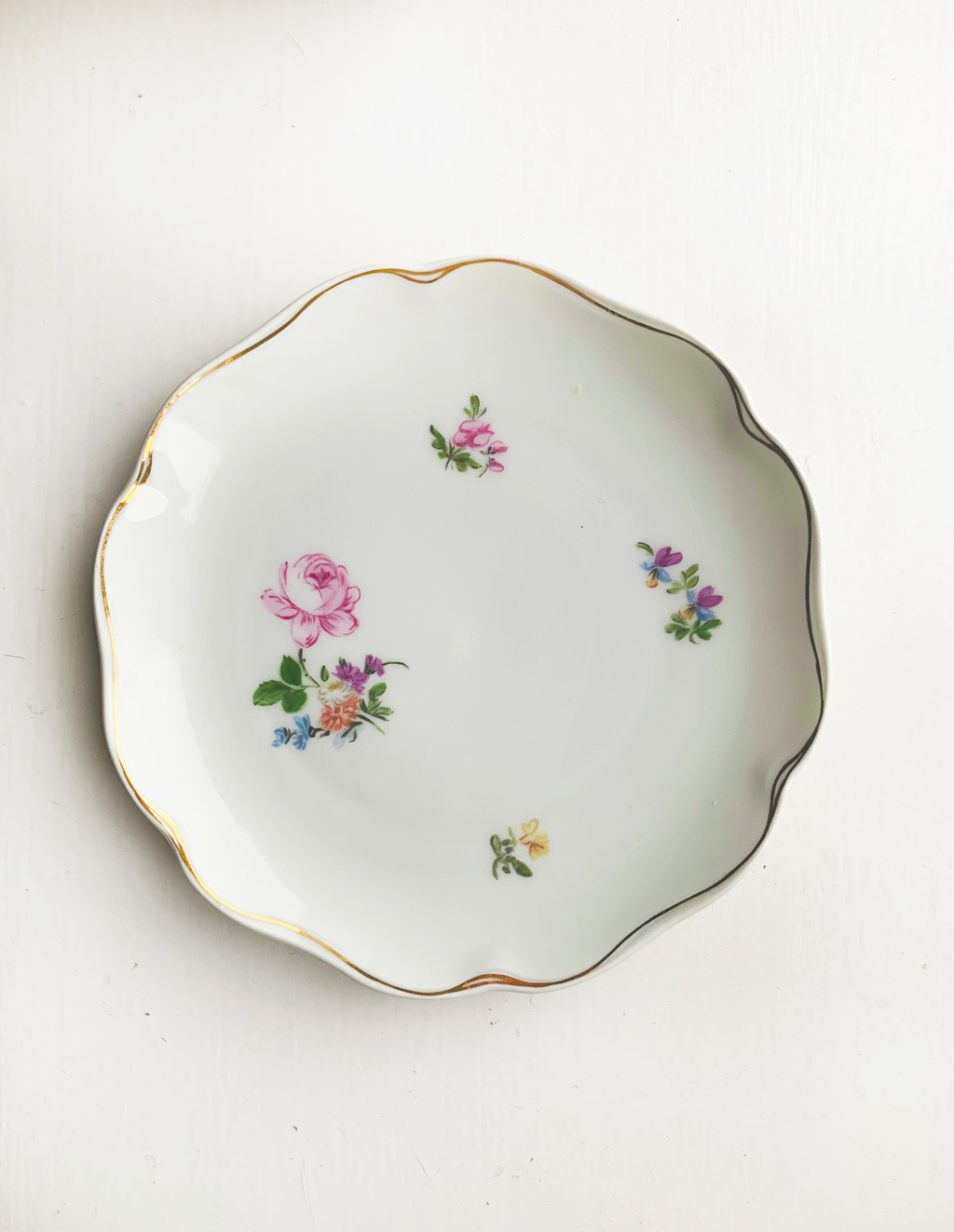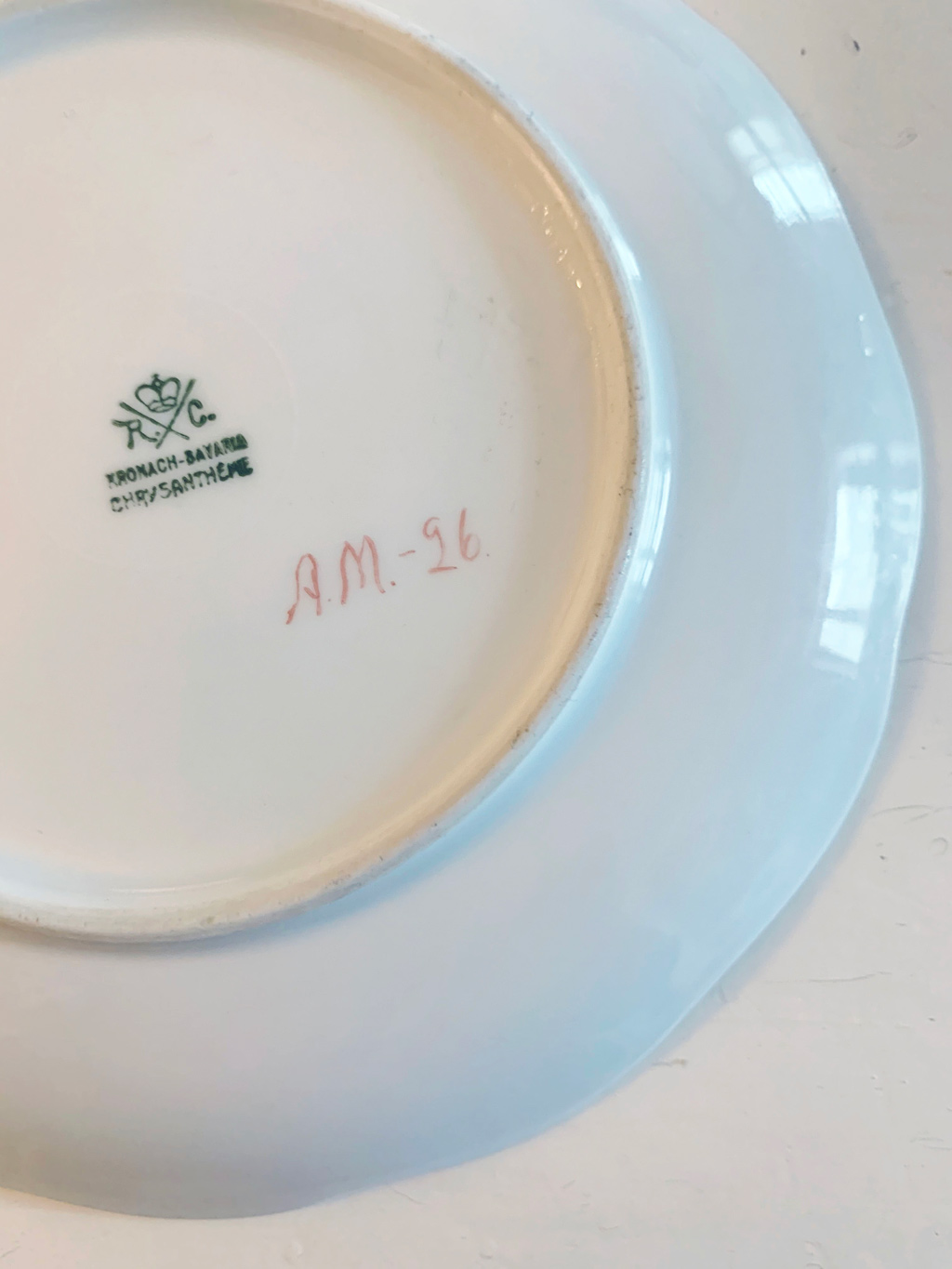NKDWare Plate
I grew up in Finland and moved away many years ago – initially to study, as is always the case! – now I call London my home. Living far from my family, objects that remind me of people I love become ever-more important. For me, most objects carry the presence of a person or some memory associated with them. I like to surround myself with objects that are inherited or gifted to me as they hold so many stories. These objects create the feeling of a safe and cosy home for me wherever I am in the world. I find especially valuable the objects and furniture that are made by someone I know. It is somehow magical to think the essence of that person is present with me in my home.
These ceramic plates were painted by my great-grandmother Alma in 1926 in Finland. They were passed down from my great-grandmother Alma to my grandmother Heta, then to my mother Anni who in turn gave them to me. Over time, the very functional but beautiful plates became imbued with the presence of four generations, and in today’s fast-moving and ever-changing world, it seems almost a miracle that the plates I use now have also been in the homes of all these women that are so dear to me. This century-long history of these objects gives me comfort and makes me happy.
Kirsi Enkovaara
Kirsi Enkovaara is a London-based product designer, Founder and Designer of ceramic brand NKDWare. Masters graduate of the Royal College of Art, London, her work combines an artistic design practice with a professional expertise in high-street homeware. Kirsi seeks to humanise mass-production and to develop innovative solutions for ethical retail. Originally from Finland, she has lived and worked in England, Spain, and Thailand, shaping her international perspective on design.
NKDWare is a ceramic brand that was founded by her in September 2020. NKDWare advocates a transparent production process and collaborative approach between designer and maker whereby a set of ceramicists from different regions of the world are given a same technique and shape to interpret using their own expertise and local materials, resulting in ceramic collections that are “same-but-different”.





